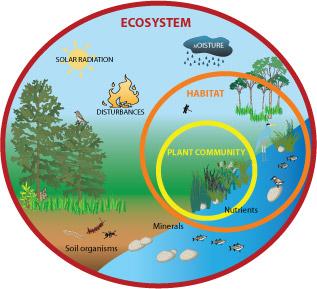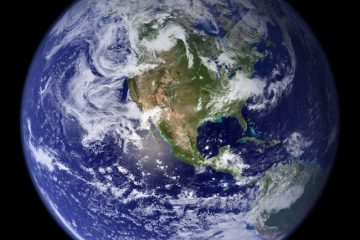Table of Contents
- Exploring the Gaia Hypothesis and Its Implications for Our Planet
- Understanding the Role of Ecosystems in the Gaia Hypothesis Framework
- Analyzing the Impact of Human Activity on Gaias Balance
- How to Engage with Gaia Hypothesis Through Educational Videos
- Practical Steps to Foster a Gaia-Inspired Lifestyle
- Q&A
- The Way Forward
Exploring the Gaia Hypothesis and Its Implications for Our Planet
The Gaia Hypothesis, formulated by James Lovelock in the 1970s, posits that the Earth functions as a single, self-regulating entity. This theory suggests that life on our planet is intricately connected, with biological and physical components working together to maintain the conditions necessary for life. As our climate changes and ecosystems face unprecedented pressures, the implications of this hypothesis are more pertinent than ever. Understanding how living organisms interact with their environment allows for a deeper appreciation of our role in the planetary system.
At the core of this concept is the idea that various life forms, including plants, animals, and microorganisms, contribute to the stability of Earth’s climate, atmosphere, and geology. For instance, trees play a vital role in regulating atmospheric carbon dioxide, while oceans help to maintain temperature by absorbing heat. This interdependence leads to some key points of consideration:
- Feedback Loops: The relationship between Earth’s biosphere and its physical environment creates feedback loops, either stabilizing or destabilizing global systems.
- Biodiversity’s Role: A diverse range of species enhances resilience against environmental changes, underscoring the importance of conservation.
- Human Influence: Human activities increasingly disrupt natural balances, highlighting our responsibility in managing Earth’s systems.
An examination of the Gaia Hypothesis offers valuable insights into sustainability and environmental stewardship. As we confront issues such as climate change, deforestation, and pollution, recognizing the interconnectedness of life can foster a more profound commitment to protecting our planet. This awareness encourages practices that promote balance and harmony within ecosystems, emphasizing that human health is linked with the health of our environment. Such an approach not only informs individual actions but also shapes broader environmental policies that can have lasting impacts.

Understanding the Role of Ecosystems in the Gaia Hypothesis Framework
At the heart of the Gaia Hypothesis lies the intricate balance of ecosystems, which function not just as isolated entities but as interconnected webs. These ecosystems are composed of various biotic and abiotic components that interact continuously. This relationship creates a self-regulating, stable environment capable of sustaining life. Each organism, from the smallest bacterium to the largest mammal, contributes to the resilience and adaptability of its ecosystem, exemplifying the symbiotic nature of life on Earth.
Within this framework, ecosystem functions—such as nutrient cycling, energy flow, and population dynamics—play critical roles. For instance, plants absorb sunlight and convert it into energy through photosynthesis, while decomposers break down organic matter, returning essential nutrients to the soil. The interplay between these processes ensures the continual replenishment of resources necessary for survival. By recognizing these functions, we can appreciate how ecosystems collectively maintain the delicate balance that the Gaia Hypothesis suggests is vital for the planet’s health.
| Key Ecosystem Functions | Description | Significance |
|---|---|---|
| Nutrient Cycling | Movement of nutrients through biotic and abiotic components. | Supports plant growth and sustains food webs. |
| Energy Flow | Transfer of energy through food chains. | Maintains productivity and ecosystem dynamics. |
| Population Dynamics | Changes in species populations over time. | Influences biodiversity and ecosystem stability. |

Analyzing the Impact of Human Activity on Gaias Balance
The intricate relationship between human activity and the Earth’s ecosystems underscores the delicate balance that supports life as we know it. Modern industrialization, urbanization, and agricultural practices have significantly altered natural habitats, leading to disruptions in various biogeochemical cycles. The impact of these changes can be observed through phenomena such as climate change, loss of biodiversity, and soil degradation. Each of these issues not only threatens environmental stability but also poses dire consequences for human health and well-being.
To appreciate the depth of human influence on Gaia’s balance, it is crucial to consider the following aspects:
- Carbon Footprint: Activities such as transportation and manufacturing are leading contributors to greenhouse gas emissions.
- Deforestation: The clearing of forests for agriculture and development diminishes carbon storage and disrupts local climates.
- Pollution: Industrial runoff and plastic waste pollute water sources, affecting marine life and food chains.
- Urbanization: Expanding cities encroach on natural habitats, reducing biodiversity and altering ecosystems.
Understanding these elements provides insight into the ongoing debate surrounding sustainability and conservation efforts. Recent studies highlight the potential for restoration and regeneration through human intervention, particularly when communities unite for environmental stewardship. For instance, reforestation initiatives not only capture carbon but also revive ecosystems and strengthen biodiversity. The challenge lies in balancing human development with ecological preservation, a task that demands innovative thinking and a commitment to long-term environmental health.

How to Engage with Gaia Hypothesis Through Educational Videos
The Gaia Hypothesis presents an intriguing perspective on how life interacts with the Earth’s environment, suggesting that our planet functions as a self-regulating organism. Engaging with this concept through educational videos allows viewers to build a deeper understanding of ecological interconnections. Creative animations, documentary-style presentations, and expert interviews can enrich the learning experience, making abstract ideas more tangible. Look for videos that incorporate visual storytelling, lively graphics, and relatable examples to resonate with broader audiences.
To enhance the educational impact, consider exploring platforms that specialize in science communication. Many channels offer curated playlists specifically focused on environmental science and the Gaia Hypothesis. These can include a variety of formats, such as:
- Animated Explainers: Simplifying complex scientific concepts through engaging visuals.
- Interviews with Experts: Insights from scientists and researchers who specialize in ecology.
- Documentaries: In-depth explorations of ecosystems and their interdependent relationships.
For those looking to expand their learning even further, creating a viewing schedule and discussion group can encourage active engagement. A simple table can help in organizing video resources:
| Video Title | Platform | Key Topics |
|---|---|---|
| The Gaia Hypothesis Explained | YouTube | Overview, Principles, Implications |
| Life as an Interconnected System | Vimeo | Ecology, Symbiosis, Earth’s Balance |
| Interviews with Gaia Scientists | Facebook Watch | Research, Case Studies, Future Outlook |
Utilizing video content not only makes learning about the Gaia Hypothesis accessible but also fosters an interactive community that can share ideas and insights, nurturing a collective commitment to understanding and preserving our planet.

Practical Steps to Foster a Gaia-Inspired Lifestyle
Embracing a Gaia-inspired lifestyle involves a conscious choice to live in harmony with the environment. Start by examining your daily habits and identifying areas where you can reduce your impact on the planet. Simple actions like using public transport or biking instead of driving not only cut down on carbon emissions but also promote a healthier lifestyle. Incorporate sustainable practices into your home by utilizing energy-efficient appliances, adopting a minimalist approach to consumption, and cultivating a garden with native plants that support local biodiversity.
Another essential facet is the consumption of food. Aim to incorporate a diet that emphasizes local and organic products. By choosing seasonal fruits and vegetables from farmers’ markets, you are not only nourishing your body but also supporting local economies and reducing the carbon footprint associated with long-distance food transportation. Consider also the importance of reducing meat consumption, as plant-based diets have been shown to have a significantly lower environmental impact. Try introducing “Meatless Mondays” to your weekly meal plan to gently ease into more sustainable eating habits.
Community engagement is vital in fostering a deeper connection to the planet and its ecosystems. Join or form local groups that focus on sustainability initiatives, such as community gardens, recycling programs, or clean-up efforts in your area. By collaborating with others who share a commitment to the planet, you enhance your understanding of ecological systems and their interdependence. Look into workshops or seminars that promote education around the Gaia theory and its practical applications. This not only enriches your knowledge but also inspires action in your community, creating a ripple effect of environmental consciousness.



0 Comments